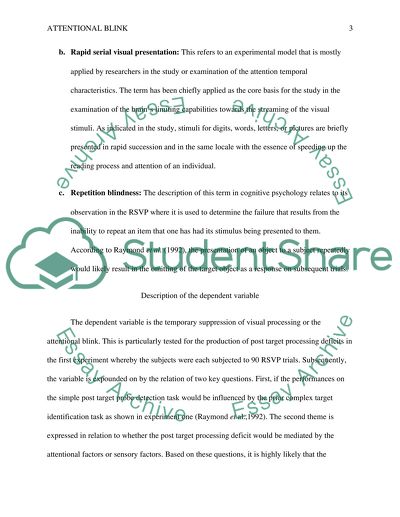Cite this document
(“Temporary suppression of Visual Processing in an RSVP Task : An Essay”, n.d.)
Temporary suppression of Visual Processing in an RSVP Task : An Essay. Retrieved from https://studentshare.org/psychology/1638106-temporary-suppression-of-visual-processing-in-an-rsvp-task-an-attention-blink
Temporary suppression of Visual Processing in an RSVP Task : An Essay. Retrieved from https://studentshare.org/psychology/1638106-temporary-suppression-of-visual-processing-in-an-rsvp-task-an-attention-blink
(Temporary Suppression of Visual Processing in an RSVP Task : An Essay)
Temporary Suppression of Visual Processing in an RSVP Task : An Essay. https://studentshare.org/psychology/1638106-temporary-suppression-of-visual-processing-in-an-rsvp-task-an-attention-blink.
Temporary Suppression of Visual Processing in an RSVP Task : An Essay. https://studentshare.org/psychology/1638106-temporary-suppression-of-visual-processing-in-an-rsvp-task-an-attention-blink.
“Temporary Suppression of Visual Processing in an RSVP Task : An Essay”, n.d. https://studentshare.org/psychology/1638106-temporary-suppression-of-visual-processing-in-an-rsvp-task-an-attention-blink.


